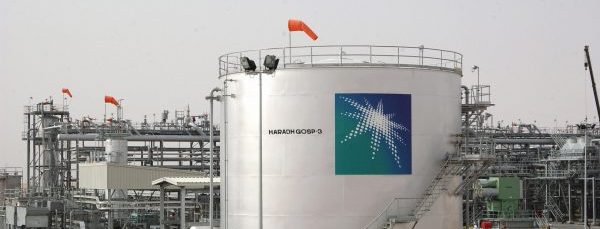King Salman’s Asia tour trumpets Saudi Aramco downstream moves

Joint venture agreements with Asian countries to build refineries and petrochemical facilities help cement Saudi Aramco’s position in the region. AFP/Getty Images photo.
Saudi Aramco to supply crude to Asian refineries kingdom invested in
Saudi Arabia’s King Salman has been on a three-week tour of Asia, and along the way has cemented the kingdom’s place as a leading crude supplier to the world’s largest consumer market.
During his tour of Malaysia, Indonesia, Japan and China, King Salman signed a number of deals, all part of the Saudi strategy to increase leverage over refined product and petrochemical markets.
“Our strategy is about growth in the downstream,” Amin Nasser, chief executive officer of state oil company Aramco, told Reuters on Sunday. “The growth in that sector is very important, and anything integrated between refining, petrochemical, with marketing and distribution, is of interest to us.”
For years, Saudi Arabia was the main factor in oil markets via OPEC, which the kingdom was the organization’s de-facto leader.
But recently, with the upsurge in Russian and US shale production, Saudi Arabia’s influence has waned along with its grip on market share.
King Salman’s tour reveals a shift in Saudi Arabia’s strategy.
During his tour, Saudi Aramco agreed to invest $7 billion in a joint venture with Malaysia’s state oil company Petronas in RAPID, a refinery and petrochemical project.
RAPID, or Refinery and Petrochemical Integrated Development set to begin in 2019, will be Aramco’s largest refinery outside the kingdom and sits just across a narrow strait from Singapore, Asia’s oil trading hub.
According to the deal, 70 per cent of oil required for the project will come from Saudi Arabia, giving the kingdom a built in market for Asian crude exports.
Reuters reports Saudi Aramco also inked a $5 billion deal with Pertamina of Indonesia which would see the expansion of the country’s larges oil refinery and Aramco will supply the crude for the facility.
“The investments are intended to enhance Aramco’s competitive position in Southeast Asia,” Ihsan Buhulaiga, a Saudi economist told Reuters.
The Pertamina investment allows the Saudis to join the hub of refineries located in and around Singapore that are factors in regional fuel prices.
Fuel deliveries in and out of this area dubbed “the window”, are assessed by S&P Global Platts. Activity at the window influences the pricing of oil products worth billions of dollars every day.
John Driscoll, director of consultancy at JTD Energy in Singapore told Reuters “When you control refining capacity with the capability to deliver petroleum products into the window, you have access to a physical outlet which also plays a key role in daily price discovery.”
King Salman also visited China where the Saudis signed deals that could be worth as much as $65 billion, covering energy, manufacturing and even a theme park in the kingdom.
Included in the deals are a MOU between Aramco and China North Industries Group Corp, or Norinco, to examine the possible construction of refining and petrochemical plants in China.
Along with re-establishing market control, Saudi Arabia is currently looking to boost the valuation of Saudi Aramco in what could be the world’s largest-ever IPO.
According to Deputy Crown Prince Mohammed bin Salman who oversees the kingdom’s economic policy, Aramco is expected to be valued at upwards of $2 trillion. Analysts differ with that assessment and have estimated valuation to be between $1 trillion and $1.5 trillion.
John Sfakianakis, director of the Riyadh-based Gulf Research Centre, told Reuters the trip was “the beginning of a long-term strategy of Saudi Arabia to open itself to Asian investors and vice versa” as part of its Vision 2030 policy to diversify the kingdom’s economy beyond crude exports.









